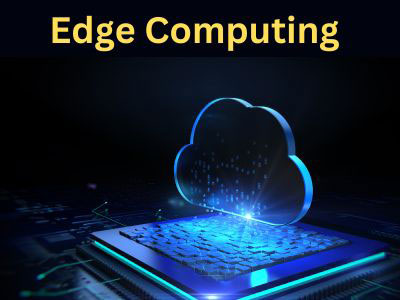Key Takeaway
Edge computing is not attributed to a single inventor. It evolved as a response to the growing demand for faster data processing. Many researchers and tech companies contributed to its development.
The concept of edge computing grew out of the need to reduce latency and improve real-time decision-making. It gained momentum with the rise of IoT, where devices needed to process data quickly at the source.
The Origin of Edge Computing- A Brief History
The concept of edge computing has evolved over time, influenced by the growth of the internet, cloud computing, and IoT. The need for faster, more efficient data processing led to the development of decentralized computing systems, and edge computing emerged as a solution to address latency and bandwidth challenges.
In the early 2000s, cloud computing dominated the tech landscape, with companies storing and processing data remotely. However, as IoT devices began to proliferate, the limitations of cloud computing—particularly around latency—became evident. Edge computing evolved as a response, allowing data to be processed locally, at or near the source. Today, edge computing continues to grow, driven by the increasing demand for real-time data processing and the rise of 5G technology.

Key Individuals and Organizations Behind Edge Innovation
To appreciate edge computing today, let’s take a quick journey through its history. Pioneers in the field have laid the groundwork for modern innovations. Individuals and organizations have contributed invaluable insights, pushing the envelope of what’s possible in distributed computing.
From the “fog computing” concept proposed by Cisco to advancements made by tech giants like AWS and Microsoft, the evolution has been rapid. Each contribution has shaped the principles that guide edge computing today.
For newly joined engineers, it’s helpful to familiarize yourself with key players and innovations in this field. Understanding historical context provides depth to your knowledge and can inspire new ideas for your projects.
By learning from the past, you can better position yourself at the forefront of future developments in edge technology.
You May Like to Read
How Edge Computing Evolved Over Time
Edge computing has evolved significantly over the past decade, moving from a niche technology used by a few industries to a mainstream solution that is driving innovation across various sectors. Initially, edge computing was used for specific applications where latency was critical, such as telecommunications and manufacturing. However, as the number of connected devices grew and the need for real-time data processing increased, edge computing began to gain traction across a wide range of industries.
The rise of the Internet of Things (IoT) played a significant role in the evolution of edge computing. As IoT devices proliferated, businesses realized the need to process data closer to the source to reduce latency and bandwidth costs. This led to the development of more sophisticated edge devices that could handle large amounts of data locally, without relying on centralized cloud systems.
Major Milestones in the Development of Edge Technology
Edge computing has evolved significantly over the past decade, with several key milestones shaping its development. Initially, edge computing was primarily seen as a niche technology used in specific applications such as IoT and industrial automation. However, with the rise of big data, AI, and 5G, edge computing has become central to the digital transformation of industries across the globe.
One of the earliest milestones was the development of IoT technologies, which generated the need for local data processing. This led to the introduction of edge devices capable of processing data closer to the source, reducing the reliance on cloud-based services. As IoT devices became more prevalent, the need for faster, more efficient data processing grew, driving the development of edge computing.
The next significant milestone came with the launch of 5G networks. With 5G promising ultra-low latency and high-speed connectivity, it became clear that edge computing would be crucial in enabling real-time applications. The combination of 5G and edge computing opened up new possibilities for industries such as autonomous vehicles, smart cities, and healthcare, where real-time data processing is essential.
The Impact of Edge Computing’s Invention on Modern Systems
The invention of edge computing has had a transformative impact on modern systems, revolutionizing the way data is processed, transmitted, and utilized across industries. Traditionally, data processing was centralized in large data centers, where vast amounts of information were sent for analysis before any action could be taken. However, with the advent of edge computing, data can now be processed closer to the source, reducing latency and enabling real-time decision-making.
Edge computing has led to the development of smarter, more efficient systems across industries. In manufacturing, for example, edge devices can monitor machinery in real time and predict failures before they occur, reducing downtime and increasing productivity. In healthcare, edge computing enables the immediate processing of patient data, leading to faster diagnoses and better patient outcomes.
The rise of edge computing has also made it possible to scale systems more efficiently. By distributing data processing across multiple devices, businesses can avoid the bottlenecks and limitations of centralized systems. This has opened up new possibilities for industries such as autonomous driving, smart cities, and logistics, where real-time data processing is essential.
Conclusion
In conclusion, edge computing is not attributed to a single inventor but has evolved over time through contributions from various pioneers in the fields of networking, computing, and data management. The concept of decentralized computing dates back to the 1990s, but it gained significant traction with the rise of IoT, 5G, and AI. Companies and organizations, including Cisco, IBM, and Microsoft, have played key roles in advancing edge computing by developing solutions and frameworks that enable local data processing. Today, edge computing continues to evolve, with many researchers, technologists, and companies driving innovation in this space, making it a vital component of modern computing infrastructures.
